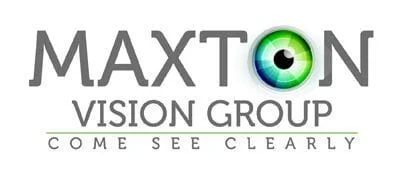Macular degeneration represents one of the most significant causes of vision loss in older adults. According to the Centers for Disease Control and Prevention, an estimated 1.8 million people currently suffer from macular degeneration, with an additional 7.3 million people at risk of developing this
Read more-
Curbing Macular Degeneration
Category: Newsletters, Conditions That Affect Vision
-
Why Eye Care is Particularly Important if You Have Diabetes
Category: Newsletters, Conditions That Affect Vision
Have you seen an optometrist this year? If you have diabetes, skipping your appointment could put your vision at risk.
Read more -
All About Amblyopia
Category: Newsletters, Conditions That Affect Vision
Amblyopia, also known as lazy eye, is a visual disorder caused by abnormal vision development, often occurring during infancy. Patients with amblyopia have reduced vision in one eye, because it is not working properly in conjunction with the brain. With early detection and proper treatment, loss of
Read more -
All About Glaucoma
Category: Newsletters, Conditions That Affect Vision
Glaucoma is a serious disorder that can damage the optic nerves of your eyes if left untreated. The optic nerve carries images from your eyes to your brain. If the nerve is damaged, full or partial vision loss can occur. In some cases, people develop glaucoma because the pressure in their eyes begins
Read more -
All About Swollen Eyelids
Category: Newsletters, Conditions That Affect Vision
Swollen eyelids can be uncomfortable and unattractive. Swollen eyelids are associated with a variety of symptoms that can hamper or affect vision. While most cases of swollen eyelids are not serious, several serious conditions may cause swollen eyelids. Without proper treatment, chronic swollen eyelids
Read more -
Binocular Vision: Disorders and Treatment
Category: Newsletters, Conditions That Affect Vision
For many, the term binocular vision conjures images of super powers or the rare ability to spot objects far away, but having binocular vision simply means having two eyes with which to see. Binocular vision does lend creatures with two eyes advantages over those with only one, such as enhanced vision,
Read more -
Diabetic Retinopathy: What Is It?
Category: Newsletters, Conditions That Affect Vision
Diabetic retinopathy refers to several eye problems that are characterized by damage to the light-sensitive retina, caused by excessive blood sugar levels. Almost half of Americans with diabetes suffer from some level of diabetic retinopathy. When glucose levels in the blood are not properly controlled,
Read more -
Glaucoma Care: What You Need to Know
Category: Newsletters, Conditions That Affect Vision
Glaucoma is the second leading cause of blindness worldwide, reports the Glaucoma Research Foundation. This common eye condition typically affects older adults, although infants and young adults are also at risk. Fortunately, however, cutting-edge research is improving diagnosis and treatment of this
Read more -
Strabismus
Category: Newsletters, Conditions That Affect Vision
Strabismus is the medical term for the misalignment of the eyes. Commonly referred to as cross-eyed or wall-eyed, strabismus may involve either one or both eyes turning inward, outward or even up or down. It is one of the most common vision conditions in young children, affecting somewhere between 2
Read more -
What Causes Dry Eye?
Category: Newsletters, Conditions That Affect Vision
If you have experienced scratchy, irritated eyes that are easily fatigued, you may have a medical condition called dry eye. Dry eye is characterized by inadequate tears to lubricate the eye surface and protect it. While some people dismiss dry eye as a minor irritation, it can be a sign of more significant
Read more -
What Is Astigmatism?
Category: Newsletters, Conditions That Affect Vision
Astigmatism is an extremely common eye condition that affects both children and adults. It occurs when there is an imperfection in some part of your cornea, the clear tissue that covers your iris. Light rays pass through the cornea as they travel to the retina, a thin layer of cells at the back of your
Read more -
What You Need to Know About Dry Eye
Category: Newsletters, Conditions That Affect Vision
If you have never suffered from dry eye, you might not appreciate how important your tears are to your eye health. Without enough moisture, your eyes can become dry, itchy, red and uncomfortable. Dry eye occurs when you do not make enough tears or the tears you produce are not high quality. The Importance
Read more -
Blue Light Exposure: What Is It?
Category: Newsletters, Conditions That Affect Vision
Is blue light hurting your vision? Find out how the light can affect you.
Read more -
Vision Therapy for Concussion Management
Category: Newsletters, Conditions That Affect Vision
You've probably read an article or seen a news report about professional athletes who suffer from post-concussion syndrome. Many of these athletes experienced problems after repeated falls or blows to the head during their careers. Unfortunately, the problem doesn't just affect people who've had multiple
Read more
